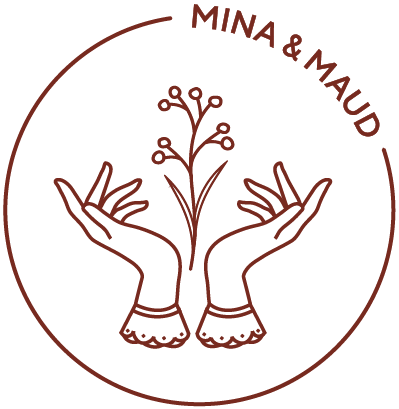How to press flowers using books
Flower pressing is an easy and affordable way to add vintage vibes to any creative project - and you don’t need any special (or expensive) equipment! By following this simple tutorial you’ll be adding beautifully preserved blooms to your journal, letters and anything else you can dream of.
Flower pressing has been around since at least the 16th century. It might surprise you, but some of the earliest records of flower pressing wasn’t delicate ladies in England! Samurai warriors in Japan practiced Oshibana as a way to encourage patience and emphasise connection with nature. And patience is something you’ll definitely need. Even with modern technology, getting the perfect pressed flower will take about as much time now as it did back then.
As an artform, flower pressing is a great option for people who aren’t confident in drawing, or can’t find the perfect ephemera they need to fit the piece of art they’re creating. It’s also a great way to preserve a cherished memory - whether you want to preserve a flower gifted to you by a loved one, or a wildflower you picked during a particularly memorable walk. The good news is that whatever your reasons, flower pressing isn’t hard, and doesn’t require any special equipment over what you already have in your home. So let’s get started!
Materials for pressing flowers
To make your pressed flowers you’ll need:
The flowers, petals, or leaves you want to press. Make sure they’re not too thick. A whole sunflower, for example, is too large to press, so try pressing a sunflower petal or leaf instead.
Sheets of newspaper or another form of absorbent paper such as parchment paper
Scissors
A few heavy books, at least two hardcover.
A cool, dry place away from sunlight and any other direct sources of heat
Patience! Flower pressing can take anywhere between 5-8 weeks, depending on what you’re pressing.
TIP: Make sure whatever flowers/leaves you’re pressing are dry of excess moisture, such as dew or rain. I recommend picking your flowers after a long sunny day, if possible. If not, allow your chosen flowers to dry overnight before pressing to avoid mold.
TIP: Paper towel can be quite coarse and may damage what you’re trying to press, so I would avoid using it if you can.
Pressing flowers with no special equipment
Once you’ve got everything you need, here’s what you need to do to press your beautiful flowers.
Step 1:
Using your scissors trim away any long stems or parts of the flowers you do not want to press, using your fingers to gently pull apart any individual petals. Then sort the flowers, leaves, and/or petals that you wish to press into groups of similar thickness. Usually this means you’ll be grouping by flower species, but not always.
TIP: Pressing flowers of similar thickness ensures that each flower is pressed equally, and that you’re not left with some un-pressed flowers at the end of the pressing process.
Step 2:
Cut out 6 sheets of your chosen paper for each group of flowers you want to press, making sure they’re 2cm smaller on all sides than the books you’re using to press.
Step 3:
Stack 3 sheets of paper, then arrange the flowers you’re pressing on top. Take care to space them out and ensure they’re not overlapping. Once you’re happy with the arrangement, cover them with the remaining 3 sheets of paper.
TIP: Stick a little tab or flag out the edge of your makeshift press, with the type of flower and the date you started pressing. This will help avoid any forgotten flowers!
Step 4:
Place your paper-flower-paper sandwich onto one of your hardcover books, and place another hardcover book on top. If you added a name tab, place it so it sticks out. In this example I’ve used old encyclopedias.
Step 5:
Repeat steps 2-4 for any remaining groups of flowers/leaves you have left from step 1.
Step 6:
Place your stacked books in a cool dry place. Ideally each set of 6 papers should be between different books to ensure even pressure.
Step 7:
Wait at least 5 weeks before checking on them. Depending on the humidity and temperature of your room this time can vary.
TIP: Be gentle when you check - if they’re not ready, whatever you’re pressing may stick to the paper and tear.
Step 8:
After 5-8 weeks, your flowers should be fully pressed! You can tell when they are ready as they will come away from the paper easily and hold their flat shape. Gently remove them from the paper using your fingers or tweezers and use them immediately, or store them for later.
TIP: Now that they’re fully dry, you no longer need to avoid overlapping them - they can be readily stored on top of each other so long as you’re careful!
And you’ve pressed your flowers!
That’s all there is to it! I hope this article helped dispel some of the mystery around flower pressing, and I look forward to seeing your pressing creations, so tag me in them on Instagram! @mina.and.maud
Until next time, happy crafting.
Have a pressed flower related challenge or question?
Contact us with your suggestions for future blog posts, we’d love to hear from you.





